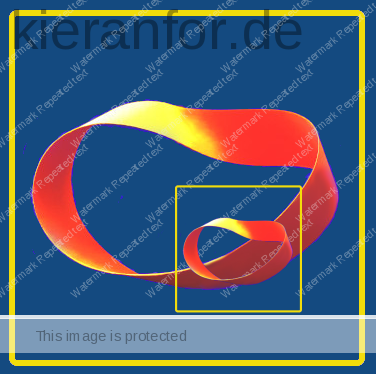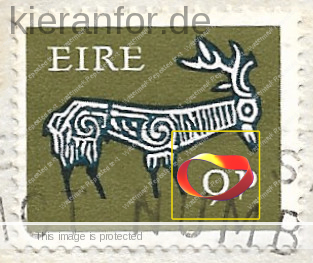Header image: KF personal pic of an old Irish postage stamp
“In humility we possess self-esteem, accept ourselves as we are,
― Al-Anon Family Groups, Paths to Recovery
assets and defects alike, and extend the same acceptance to others.
We are learning to recognize humility in others;
we are attracted to them and we learn from them.”
Certainty is the death of humility and, at least in my case, coincided with a lack of self-esteem.
This certainty was held as a sort of protective mechanism and directed outward
in forms of dominance, control, interference, judgment,
and the imposition of advice and commentary.
These behaviors served as insulation from the other, to keep them at a distance,
lest they saw me in the unfavorable light in which I saw myself.
Humility is a prerequisite for teaching and learning, and all forms of growth.
In the same way that nothing can be added to a cup that is full,
certainty occupies all the room that might become
the generative space that can exist between our subjectivity and the other.
This third space exists as an act of faith, an act of humility.
It is only through allowing room for the other that our subjective reconstruction can take place.
Leaving room for the other – for a higher power; for another individual’s personal journey;
for the shoots of our own subjectivity – creates the space needed for growth.
It requires faith – belief as a prerequisite to understanding; credo ut intelligam; living “as if”.
Humility is required to enable the generative space needed for personal growth.
– KF, 2023
Humility admits the limits of our knowledge, that there are unknown unknowns which make resilience and adaptability imperative…Recognising that none of us truly succeeds entirely on our own points to our responsibility for improving the systems in which we work and live. It is the first mark of humility.
Carney, M. (2021) Value(s): Building a Better World for All
Aoki, Ted. T. 2005 (1993). Humiliating the Cartesian Ego. In Curriculum in a New Key: The Collected Works of Ted T. Aoki, edited by William F. Pinar and Rita L. Irwin (291-301). Mahwah, NJ: Lawrence Erlbaum.
- 213 The Chinese knew well what it is for humans to live in wisdom, for in their language, wisdom is inscribed in a family of words: human, humility, humus, and humor, all etymologically related as they are, too, in our language.
- 299 HUMILIATING “HUMILIATION”: From the outset, I have wanted to re-understand the word humiliation, guided by the notion that a word as signifier shifts in meaning from discourse to discourse. I have been wanting to move into a space that is not anthropocentric, not caught in a discourse where humans are central, frozen into the subject-object dualism wherein humans, the subject, hold sway with their will to control and master others. For, in such a discourse, it is too easy for the “I,” the arrogant “I” to act on another, to humiliate the other. I have wanted to escape from that bind of space. So I have been looking for a site where the usual meaning of humiliating connected with human-centeredness dissolves somewhat, so there is room for the emergence of new lines of meaning.
- 300 Here, humiliating shifts its meaning, admittedly ambiguously, to one that is concerned with lived space where people dwell communally, where dwelling is a dwelling with others on earth under the sky, where we find humus that nurtures humans, where humans caught up in binds sometimes chuckle, where we can hear laughter at the thought of humans thinking they can master the world.
- What kind of a place is this? A place where there is room for words like humour, human, humus, humility to live together. In such a place, to be humiliated is to be reminded that we are communally ecologic, that the rhythmic measures of living on Earth come forth polyphonically in humour and human and humus and humility.
- I have taken this time to come to a place named and, a place of lived tension between this and that. And here, I hope, humiliation is no longer a word that merely sounds negative; in its repositioned sense, humiliation can indeed be a sign of our humanness.
Aoki, Ted T. 2005 (1987). Inspiriting the Curriculum. In Curriculum in a New Key: The Collected Works of Ted T. Aoki, edited by William F. Pinar and Rita L. Irwin (357-365). Mahwah, NJ: Lawrence Erlbaum.
- 365 Moreover, a truly educated person speaks and acts from a deep sense of humility, conscious of the limits set by human finitude and mortality, acknowledging the grace by which educator and educated are allowed to swell in the present that embraces past experiences but is open to possibilities yet to be. Thus, to be educated is to be ever open to the call of what it is to be deeply human, and heeding the call to walk with others in life’s ventures.
Aoki, Ted T. (2005 [1993]). Legitimating Lived Curriculum. In Curriculum in a New Key, edited by William F. Pinar and Rita L. (199-215). Mahwah, NJ: Lawrence Erlbaum.
- “SCIENCE MUST BE TAUGHT AS A HUMANITY”
- Particularly at the secondary school level, we are familiar with the privileged curriculum categories that mirror the landscape of the university: courses or subjects we call science, mathematics, history, geography, literature, and so on.
- For many of us, curriculum, in spite of its inherent indefiniteness, has become definitive, so much so that we speak with ease of the curriculum, the curriculum-as-plan.
- So prominent is instrumentalism woven into the fabric of curriculum work that we will not be remiss to call this landscape the C & I Landscape.
- Surely Miss O’s open curriculum landscape is different in kind from the traditional C & I landscape that enframes many curricular activities. Rather, Miss O’s curricular landscape is a multiplicity of betweens. This landscape, so different from the striated C & I landscape, is textured by a multiplicity of lines moving from between to between, is ever open, knowing no beginning and no end, resisting enframing. In contrast to the C & I landscape, I might call this the C & C landscape, a landscape embodying the curriculum-as-plan and curriculaas- lived, indeed, an open landscape of multiplicity.
╬

